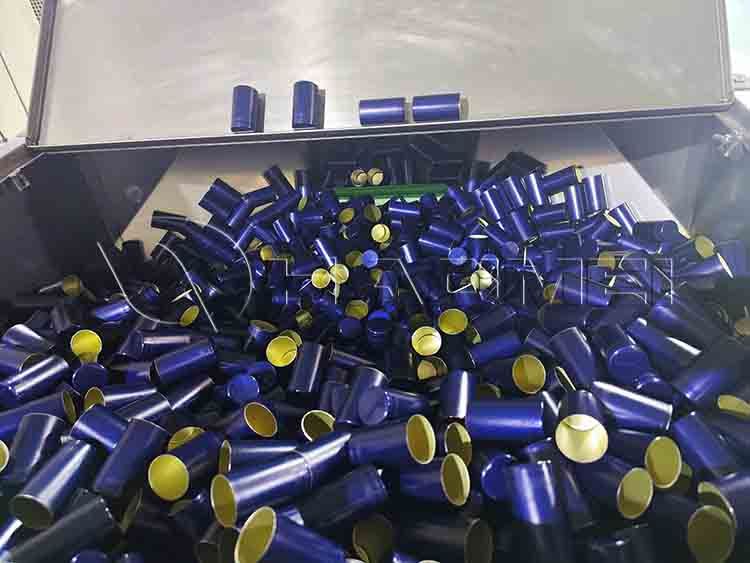
Blog
Share this
ROPP Closures for Alcohol
Sep 25, 2025 10:52:48
When enjoying fine wine, the alcohol bottle top is often overlooked. However, this small cap not only fulfills the crucial role of sealing the wine and preventing evaporation, but its structural design is also closely linked to its quality, ease of opening, and aesthetic appeal.
Bottle caps offer a wide variety of structural designs, suited to different types of wine and catering to diverse packaging needs.

1. Screw caps
The screw cap is one of the most common wine bottle caps in everyday life. Its structure is relatively simple, consisting primarily of a cap body and an internal sealing gasket. The inner surface of the cap features a spiral pattern that mates with the external threads of the bottle's opening, allowing the cap to be opened and sealed by twisting.
The advantage of this structure is that it is extremely convenient to open and close, requiring no tools, making it easy for consumers to operate. Furthermore, the screw cap provides a strong seal, effectively preventing the wine from coming into contact with air, reducing oxidation and thus preserving its flavor. Currently, screw caps are widely used in the packaging of alcoholic beverages such as beer, wine (especially New World wines), and some low-alcohol liquors.
2. Crown cap
The crown cap, named for its resemblance to a crown, is primarily composed of a cap, a sealing gasket, and a serrated edge. The cap is typically made of metal, with an internal sealing gasket that fits snugly against the bottle's opening, providing a seal. The serrated edge is a hallmark of the crown cap. During sealing, specialized equipment presses the serrations into the grooves of the bottle's opening, securing the cap securely to the bottle.
The crown cap offers excellent sealing properties, effectively preventing leakage and evaporation of the wine. Furthermore, the need for a corkscrew during opening has earned it a prominent place in the packaging of alcoholic beverages such as beer and rice wine. However, a significant drawback of the crown cap is that it is difficult to reseal after opening.
3. Cork
Cork, a traditional wine bottle cap, is primarily made from the bark of the cork oak tree. Its structural characteristics are excellent elasticity and breathability, allowing it to seal the bottle while allowing a small amount of air to enter, promoting the aging and maturation of the wine and enhancing its flavor.
High-quality cork has a soft texture and fine grain, providing excellent sealing properties. However, cork also has some drawbacks, such as susceptibility to mold infection, which can cause off-flavors in the wine (known as "cork taint"), and requires a specialized corkscrew, making opening relatively cumbersome. With the advancement of packaging technology, cork is gradually being replaced by other types of bottle caps in wine packaging, but cork remains the preferred choice in the high-end wine market.
Among the various wine bottle cap structures, the ropp bottle cap, due to its unique advantages, has gained widespread application in the packaging of various alcoholic beverages, including white spirits, red wines, and foreign spirits. So, what exactly is the ropp bottle cap structure?
Structure of the ROPP bottle cap
The ROPP bottle cap stands for Roll-On Pilfer-Proof Cap, meaning it's a roll-on, anti-theft bottle cap. It primarily consists of a cap, a sealing liner, and an anti-theft ring.
The cap is typically made of aluminum alloy, offering excellent ductility and corrosion resistance. The inner surface of the cap is smooth. During the sealing process, specialized equipment rolls the cap onto the threads of the bottle's opening, ensuring a tight fit and a secure seal.
The inner seal is located inside the cap and primarily provides a seal. It's made of a variety of materials, with polyethylene (PE), polypropylene (PP), and butyl rubber being common. Different materials are suitable for different types of wine.
The anti-theft ring is a crucial component of ROPP closures, located beneath the cap. The ring is connected to the cap at several weak points. To open the bottle cap, a firm twist is required to separate the ring, effectively preventing theft.
Original source: https://www.alubottlecaps.com/a/ropp-closures-for-alcohol.html
Previous : Wine and Oil Bottle Caps
Share this
- Email: sale@alubottlecaps.com
- Tel: +86-15978414719
- Address: CBD, Zhengzhou, Henan, China

Inquiry
We will reply to you as soon as possible